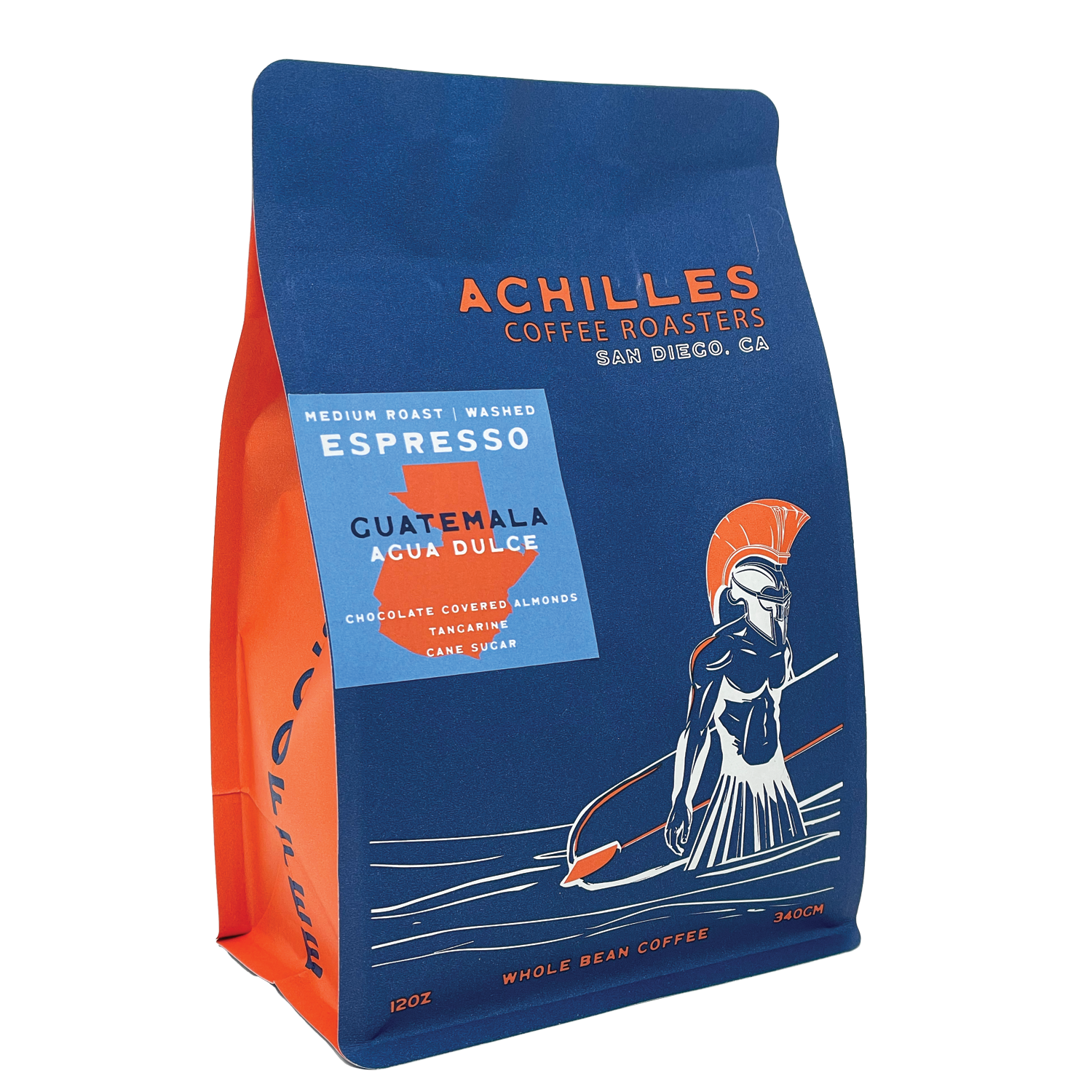Taste the Difference with Just-Roasted SOE Single Origin Espresso
Taste the Difference with Just-Roasted SOE Single Origin Espresso
Blog Article
Comprehending Coffee Beans: the Trip From Espresso to Blended Coffee Beans

The Beginnings of Coffee: A Worldwide Perspective
While you could think about coffee as a contemporary staple, its beginnings trace back centuries, intertwining with societies around the world. The tale starts in Ethiopia, where tale states a goat herdsman named Kaldi discovered the energizing impacts of coffee beans after seeing his goats frolicking vigorously after consuming them. This stimulated passion, bring about coffee's infect Arab investors who cherished the brewed beverage. By the 15th century, it reached Persia, Egypt, and Turkey, where coffee shops came to be social hubs for discussion and society.
As trade courses broadened, coffee made its means to Europe in the 17th century, promptly gaining popularity. Each culture added its unique twist to coffee prep work, enriching its background.
Cultivation and Harvesting of Coffee Beans
As coffee's journey developed, the focus changed to the farming and harvesting of specific bean selections, specifically those utilized for coffee. You'll discover that coffee beans commonly originate from Arabica or Robusta plants, each offering distinct flavors. The suitable expanding conditions include high elevations and rich, well-drained soil, which enhance the beans' high quality.
During the harvest, selecting approaches vary. Timing is important; you desire to harvest when the cherries get to peak perfection for optimum taste.
When collected, the beans are gotten ready for handling, which is essential in establishing their last taste. Recognizing the farming and harvesting processes gives you insight into what enters into your favored coffee, improving your admiration for each and every cup.
Handling Methods: From Cherry to Bean
Since you've found out about collecting coffee beans, allow's discover just how those cherries transform into the coffee beans you enjoy. You'll see how various harvesting methods influence taste, adhered to by the vital actions of fermentation and drying out. We'll damage down the milling and grading procedure that determines your coffee's high quality.
Gathering Strategies Explained
When it concerns coffee, understanding harvesting strategies is important, since they directly affect the flavor and top quality of the beans you take pleasure in. There are two main methods: discerning selecting and strip picking. Discerning selecting entails hand-picking just ripe cherries, guaranteeing you get the very best high quality beans. This technique usually brings about a richer taste account, though it's even more labor-intensive. On the other hand, strip choosing ways collecting all cherries simultaneously, no matter perfection. While it's quicker and more affordable, this can lead to a mix of tastes, influencing the end product. Eventually, the option of harvesting method can substantially affect your coffee experience, so it deserves understanding just how those beans made it to your cup.
Fermentation and Drying Out
After harvesting, the following steps in handling coffee beans play a considerable duty in shaping their flavor. You'll discover that fermentation is vital, as it assists break down the mucilage surrounding the beans, improving their taste account. Depending upon the method, this process can last from a couple of hours to a number of days, with varying outcomes based upon temperature level and humidity.
Once fermentation is full, drying out follows, which is equally vital. You can select from mechanical or sun-drying drying out approaches. Sun-drying enables the beans to absorb tastes from the atmosphere, while mechanical drying out assurances consistent dampness levels despite climate. Appropriate drying is important to prevent mold and mildew and maintain the beans' high quality, ultimately influencing your cup of coffee.
Milling and Grading Refine
As fermentation and drying out set the phase for taste advancement, the milling and grading process guarantees that only the ideal coffee beans make it to your mug. This stage entails removing the outer layers of the coffee cherry, including the parchment and husk. Top quality beans get a greater quality, resulting in a richer coffee experience.
Roasting Methods: Opening Taste Possible
When you roast coffee beans, the technique you select can drastically affect the taste profile. Understanding the connection between time, temperature level, and roasting techniques is crucial to revealing the potential of your brew. Allow's check out how these aspects collaborated to produce the excellent cup.
Roasting Methods Discussed
While you might think that all coffee toasting techniques produce the same outcomes, the reality is that each method reveals unique taste possibilities in the beans. You can select between approaches like drum toasting, air roasting, and even conventional pan roasting. Drum toasting utilizes a turning drum to uniformly distribute warmth, boosting caramelization and creating a balanced taste. Air roasting, on the various other hand, distributes hot air around the beans, promoting a lighter roast with noticable acidity. Pan toasting enables for hands-on control but calls for continuous attention to prevent burning. Each method has its subtleties, so try out different methods can help you discover the best roast that aligns with your preference preferences. Delight in the trip of discovering your optimal cup!

Effect On Taste Profile
Different toasting techniques not just influence the process yet likewise greatly influence the taste profile of the coffee beans. When you pick a light roast, you'll experience brilliant level of acidity and floral notes, showcasing the bean's origin. On the other hand, a medium roast balances level of acidity with sweet taste, typically disclosing chocolatey undertones. Dark roasts, on the other hand, draw out vibrant, great smoky flavors, often covering up the bean's distinct attributes. Each strategy discloses various oils and substances, bring about a large range of flavors. By try out numerous toasting designs, you can uncover which accounts reverberate with your taste. Comprehending these subtleties assists you value the artistry behind your cup of coffee, improving your general experience with every sip.
Time and Temperature Elements
To release the complete taste capacity of coffee beans, both time and temperature during the toasting procedure play considerable roles. When toasting, you'll locate that greater temperatures can quickly develop tastes, however if you hurry it, you might wind up with burnt notes. Conversely, reduced temperature levels permit an extra steady flavor advancement, showcasing the beans' unique qualities.

Timing is just as essential; extending the roast too long can result in a loss of acidity and brightness, while also brief a roast may leave the beans underdeveloped. Finding that sweet place needs technique and experimentation. By readjusting these factors, you can disclose the rich, complex tastes concealed within each bean, developing an absolutely impressive coffee experience.
The Art of Mixing: Crafting Special Coffee Accounts

Beginning by picking a base coffee that gives a solid structure. Select corresponding beans to boost specific taste notes. An intense Ethiopian bean can bring fruitiness, while a rich Brazilian coffee adds body. Experimentation is key-- don't be afraid to adjust ratios until you locate your suitable profile.
As you mix, bear in mind that each mix narrates. You're not just making coffee; you're producing an experience. Take your time, taste regularly, and delight in the journey of finding your signature blend - Single Origin Espresso.
Brewing Approaches: Just How Preparation Impacts Flavor
Mixing coffee opens up a domain of taste opportunities, however exactly how you make that mix can considerably influence your final cup. On the other hand, a pour-over highlights the coffee's clarity and brightness, excellent for showcasing delicate notes.
Coffee, with its high pressure, generates a focused shot that highlights sweetness and crema. If you prefer a lighter brew, take into consideration a cold mixture method; it produces a smooth, less acidic preference.
Adjusting variables like water temperature, grind size, and brew time can transform your coffee's profile. Welcome the art of brewing to discover the tastes concealed in your coffee blends.
The Future of Coffee: Sustainability and Innovation
As the coffee sector progresses, sustainability and innovation are becoming important for addressing ecological difficulties and conference customer needs. You'll observe that more coffee firms are adopting environmentally friendly practices, from sourcing beans fairly to carrying out lasting farming techniques. These changes not only assist the world but likewise boost the high quality of the coffee you delight in.
You might see developments like naturally degradable packaging and water-saving developing approaches that lower waste. Advanced technology, such as blockchain, is additionally becoming popular, making certain openness in the supply chain, which permits you to trace your coffee back to its origins.
On top of that, buying local neighborhoods and supporting farmers through reasonable trade initiatives cultivates an extra sustainable coffee community. As you sip your following cup, bear in mind that your selections can contribute to a brighter future for coffee. By choosing for sustainable brands, you're not simply taking pleasure in a drink; you're making a positive influence on the world.
Often Asked Inquiries
What Is the Difference Between Arabica and Robusta Beans?
Arabica beans are smoother, sweeter, and have a higher level of acidity, while robusta beans are more powerful, more bitter, and have more caffeine. When brewing your coffee., you'll see these differences in taste and scent.
Just How Does Elevation Affect Coffee Bean Flavor?
Altitude impacts coffee bean flavor significantly. Higher altitudes generate beans with brighter level of acidity and complicated tastes, while lower elevations often generate beans that are heavier and much less nuanced. You'll discover these differences in your mug!
What Are the Wellness Advantages of Alcohol Consumption Coffee?
Consuming coffee can boost your power, boost mental focus, and even improve physical performance. It's rich in anti-oxidants, might reduce the danger of certain illness, and can advertise a much healthier metabolic process when consumed in moderation.
Can Coffee Beans Be Reused for Brewing?
Yes, you can recycle coffee beans for brewing, however the taste may be weaker. If you enjoy trying out, try recycling them in different means, like cold brews or contributing to shakes for an additional kick.
Exactly how Should I Shop Coffee Beans for Freshness?
To maintain your coffee beans fresh, save why not try these out them in an airtight container in a cool, dark place. Avoid subjecting them to light, warm, or dampness, as these aspects can rapidly deteriorate why not try here their flavor and scent.
Comprehending Coffee Beans: the Trip From Coffee to Blended Coffee Beans.
Now that you've found out concerning harvesting espresso beans, allow's discover exactly how those cherries change into the coffee beans you like.When you roast coffee beans, the method you select can significantly impact the taste profile - Single Origin Espresso.While you could think that all coffee toasting approaches generate the exact same results, the fact is that each strategy exposes special flavor capacities in the beans.Different toasting methods not just influence the procedure however likewise considerably impact the flavor account of the coffee beans
Report this page